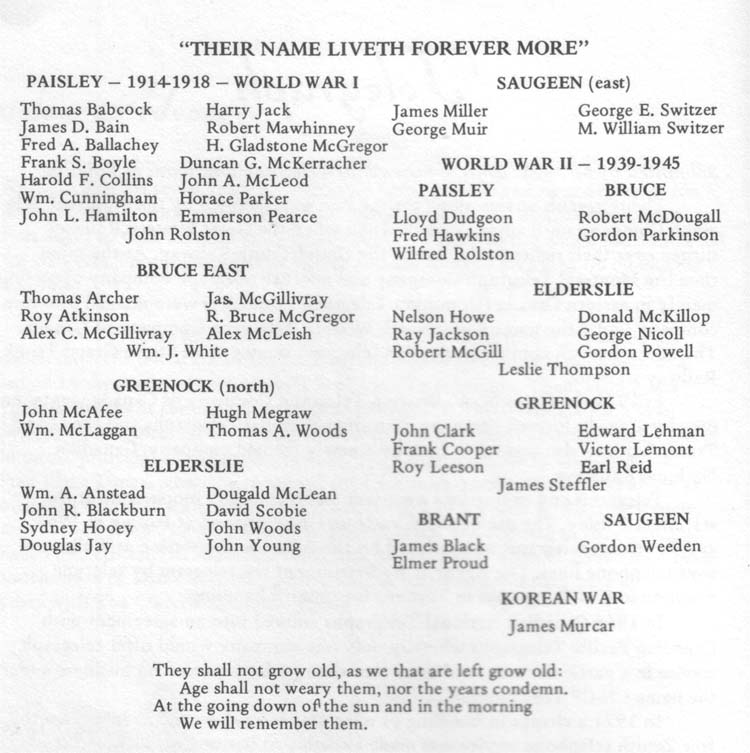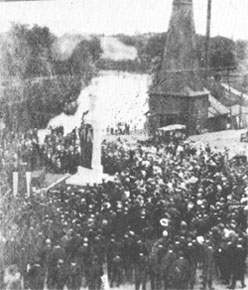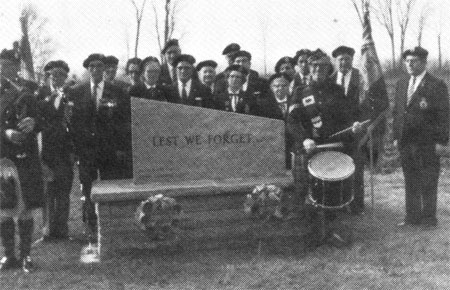Military History

Under an old Militia Law which held that every able-bodied man was liable for military duties, Paisley had organized a body with John Valentine in command. They mustered for parade on May 24 every year. In 1865 a Company of the regular militia was organized, known as No. 4 Co. of the 32nd Battalion.
In 1866 when the Fenians (an organization of Irish-Americans determined to establish an independent government in America) threatened Ontario, this Company was dispatched, by way of Southampton, to Goderich where the attack was expected. These men were billeted in homes in Goderich as there were no camps. About a month was spent under arms before the threat of invasion subsided.
In 1870 when the insurgents of Riel held Fort Gary (Winnipeg), the Government called for volunteers. From N0 4 Company’ four were allowed to volunteer. In 1885, with the outbreak of the Northwest Rebellion, an order came from Ottawa for the 32nd to get under arms. (It was the only rural battalion to receive such orders). The Company proceeded by rail to Southampton. Here they were kept for a week, but in the meantime Riel had surrendered and the Government had no occasion to send any more troops to the West. “Terrible disappointment was felt when the troops had to return home”. Records include the names of Major Thomas Hay, Captain Ed. Eckel, and Chris Parker. The Paisley Advocate of 1890 states, “We must also mention Paisley’s girl cadets who are every week becoming more proficient in their drills, and who are at the same time acquiring graceful movements and building up healthy constitutions”.
For the South African (Boer) War, the only reference available (Norman Robertson’s History of the County of Bruce) informs us that a desire was felt among the young men of Bruce to go to the aid of the British Empire. About a score of these young fellows were found in the various corps in South Africa.
Some were wounded, but only one laid down his life - Gordon Cummings of Saugeen Township. No specific mention of Paisley is made in this conflict. During World War I, 15 local men sacrificed their lives in the cause of freedom. On May 24, 1922 the citizens unveiled and dedicated the fine granite memorial standing in Memorial Square, honouring the memory of the sons of Paisley who gave their lives.
THE 160th BATTALION (The material was supplied by Regimental Quartermaster-Sergeant Bernard Brown, local veteran of the Battalion). Lieutenant-Colonel Adam Weir who had commanded the 32nd Bruce Regiment was called on to mobilize the wartime unit. Companies were set up in various Bruce County centres. The “A” Company trained at Paisley in the Armoury ( Jas. Friar’s Shop). In less than three months the Battalion had been recruited beyond strength. The troops moved to Walkerton and later to London, Ontario for further training before going overseas.
In the summer of 1916 the Battalion, along with its mascot bear called “Teddy”, went overseas where its members admirably served on the battlefields of Europe until 1918 when it was broken up as a battalion. The 160th was the strongest Canadian battalion ever to go overseas. It published a magazine “Bruce in Khaki", and was made popular in song, “Here’s to the Boys of the 1-6-0”.
In World War II, 3 men from the village and 19 from adjacent townships gave their lives for the cause of freedom. On November 11, 1949 a bronze plaque at the front entrance of the War Memorial Community Centre was unveiled and dedicated to the memory of these men.

|




